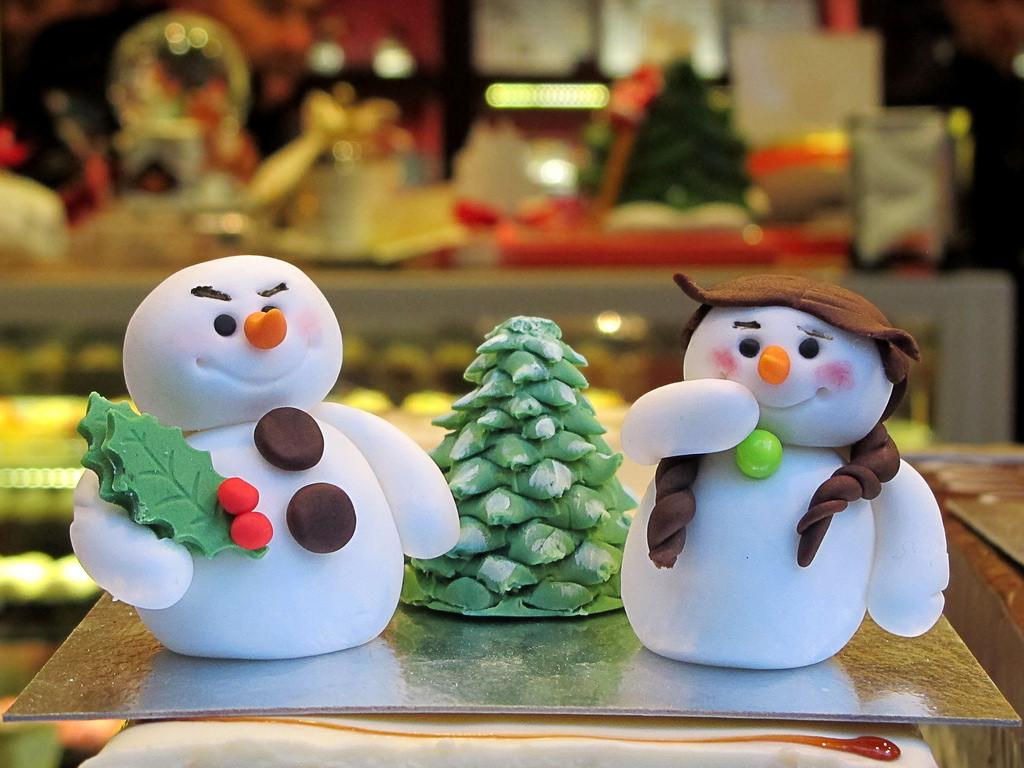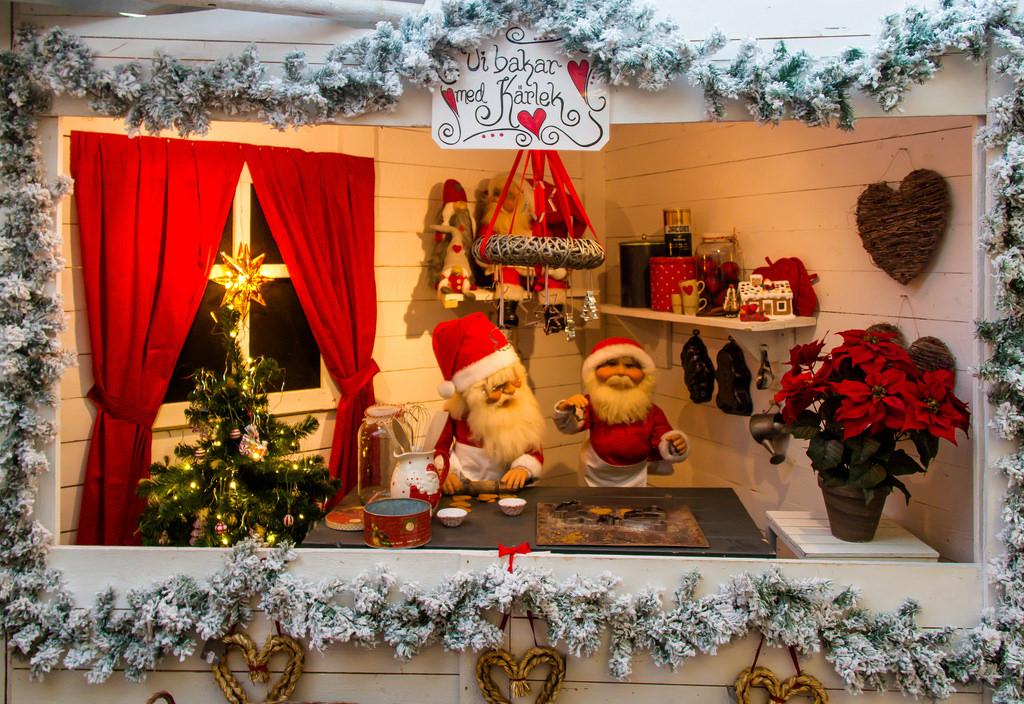
Christmas is one of the biggest celebrations in the Philippines. It is the happiest season in the country. This is the most awaited celebration, a season of love and sharing. It is also a day where people celebrate the birth of Christ Jesus.
Christmas in the Philippines, one of two predominantly Catholic countries in Asia (the other one being East Timor), is one of the biggest holidays in the archipelago. The country has earned the distinction of celebrating the world's longest Christmas season with Christmas carols heard as early as September and lasting until Epiphany, the feast of the Black Nazarene on January 9 or the Feast of the Santo Niño de Cebú on the third Sunday of January. The official observance is from 16 December with the beginning of the Simbang Gabi to the Epiphany.
Various Activities During Christmas
The various ethnic groups in the Philippines each observe different Christmas traditions, and the following are generally common.
Christmas parties
- In urban areas like Metro Manila, many offices organize Christmas parties. These are usually held during the second week of December, or right before schools and universities go on holiday. Common activities include Monito/Monita (Kris Kringle), musical or theatrical performances and parlor games. Food is provided either through potluck, or via a pool of contributions to buy food. Some have fireworks displays.
Simbang Gabi/Misa de Gallo
- Traditionally, Christmas Day is ushered in by a novena of dawn Masses known as the Misa de Gallo ("Rooster's Mass") in Spanish and in Filipino as Simbang Gabi (literally, "Night Mass"). This series of Masses lasts from December 16 to 24, and is a very important tradition. The Simbang Gabi is practiced mainly by Catholic and Aglipayan faithful, though some Evangelical Christians and other independent Protestant Churches have adapted this practice by holding similar early morning services.
- In some parishes, the Simbang Gabi begins as early as three o'clock in the morning while anticipating Masses begin a day before at eight in the evening. Attendance at the nine Masses is meant to show the believer's devotion to God as well as to heighten anticipation for the Nativity of Jesus. A popular belief is that upon the devotee's completion of the nine Masses, God will grant any special wish he makes.
- After hearing Mass, Catholic families eat traditional Filipino holiday fare sold outside the church, either within the church precincts or during breakfast at home. Vendors offer many native delicacies, including bibingka (rice flour and egg-based cake, cooked using coal burners above and under); putò bumbóng (a purple, sticky rice delicacy steamed in bamboo tubes, buttered then sprinkled with brown sugar and shredded dried coconut meat). Drinks include coffee, salabát (a ginger tisane) and tsokoláte (thick Spanish-style hot chocolate).
- In some Aglipayan churches, the congregation is invited to partake of the "paínit" (literally "heater"), which are after-Mass snacks of delicacies served with coffee or cocoa at the house of the Mass sponsor.
Christmas Eve
- For Filipinos, Christmas Eve ("Bisperas ng Pasko") on 24 December is celebrated with the Midnight Mass, and the traditional Noche Buena feast. Family members dine together at around midnight on traditional yuletide fare, which includes: queso de bola (Spanish: "ball of cheese", which is edam cheese) sealed with red wax; tsokoláte, pasta, fruit salad, pandesal, relleno and hamón (Christmas ham). Some families would also open presents at this time.
Panunulúyan
- In different provinces and schools, the journey of Joseph and the pregnant Virgin Mary in search of lodging is re-enacted. The pageant, traditionally called the "Panunulúyan", "Pananawágan", or "Pananapátan", is modelled after the Spanish Las Posadas.
- The Panunulúyan is performed after dark, with the actors portraying Joseph and the Virgin Mary going to pre-designated houses. They perform a chant meant to rouse the "owners of the house" (also actors) to request for lodging. The owners then cruelly turn them away, sometimes also in song, saying that their house is already filled with other guests. Finally, Joseph and Mary make their way to the parish church where a replica of the stable has been set up. The birth of Jesus is celebrated at midnight with the Misa de Gallo.

Christmas Day
- Christmas Day in The Philippines is primarily a family affair. The Misa de Aguinaldo is celebrated on December 25 and is usually attended by the whole family. It is the main means of celebrating Jesus Christ's birth for Catholics and Aglipayans.
- The Misa de Aguinaldo is often celebrated between 10 pm and midnight, a schedule preferred by many Filipinos who stay up late on Christmas Eve for the night-long celebration of the Noche Buena.
- Preferably in the morning, Filipinos typically visit members of the extended family, especially to pay respects to their elders. This custom of giving respect has been an age-old tradition in the Philippines called "Pagmamáno", which is done by bringing the elder's hand to one's forehead, while saying the phrase Máno Pô (lit. "Hand, please"). The elder then blesses the person who has given their respect, and in turn gives "Aguinaldo", or money in the form of crisp, fresh-from-the-bank bills is given after the Pagmamano, mostly to younger children. Godparents are especially socially obligated to give presents or Aguinaldo to their godchildren.
- A Christmas Lunch usually follows after the "Pagmamano". The menu is heavily dependent upon the finances of the family, with richer families preparing grand feasts, while poorer families choose to cook simple yet special dishes. Some families choose to open presents on this day after the lunch.
- When nighttime falls, members of the family usually return home or linger to drink, or playing parlor games and Disco Party. Some may opt to have another feast for dinner. Some families spend the entire day at home to rest after the previous days' festivities.
Niños Inocentes
- Niños Inocentes is commemorated on December 28 as Holy Innocents' Day or Childermas in other countries. The innocents referred to are the children who were massacred by order of Herod, who was seeking the death of the newborn Messiah. Filipinos celebrate the occasion doing pranks to one another, similar to April Fool's Day, and readily admits "Na-Niños Inocentes ka." once called out. One of the most widely done sinister pranks on this day is to borrow money without the intention of paying back. Victims are usually helpless in getting remuneration from the offender, and are instead forewarned not to lend money on this day.
New Year's Eve
- On December 31, New Year's Eve ("Bisperas ng Bagong Taon"), Filipino families gather for the Media Noche or midnight meal – a feast that is also supposed to symbolize their hopes for a prosperous New Year. In spite of the yearly ban on firecrackers, many Filipinos in the Philippines still see these as the traditional means to greet the New Year. The loud noises and sounds of merrymaking are not only meant to celebrate the coming of the New Year but are also cast out malevolent spirits. Safer methods of merrymaking include banging on pots and pans and blowing on car horns. Folk beliefs also include encouraging children to jump at the stroke of midnight so that they would grow up tall, displaying circular fruit and wearing clothes with dots and other circular designs to symbolize money, eating twelve fruits at 12 midnight for good luck in the twelve months of the year, and opening windows and doors during the first day of the New Year to let in the good luck.
Three Kings (First Sunday of the year)
- Christmas officially ends on Epiphany, more commonly known as Three Kings' Day (Tres Reyes in Spanish or Tatlóng Harì in Tagalog). Three Kings was traditionally commemorated on January 6 but is now celebrated on the first Sunday after the New Year. Some children leave their shoes out, so that the Three Kings would leave behind gifts like candy or money inside the shoes.
- From 2011, the season actually ends on the day of the Feast of the Baptism of Jesus, now held on the Monday after Epiphany, with the final festivities held on January 8 and 9 with the processions of the Black Nazarene in Manila and Cagayan de Oro. These are done in honour of the image's 1787 transfer to its present residence in Quiapo Church in the capital city's Quiapo district, then a separate municipality.
- The holiday is sometimes extended to last week of January in honor of the Santo Niño or Christ Child, whose feast falls on the third Sunday of January yearly. The image most associated with the day is the reportedly miraculous Santo Niño de Cebú, the first Christian image brought to the islands. In 1521, Ferdinand Magellan came to Cebú and gave the image as a baptismal present to Datu Humabon and his wife when they and their subjects converted to Christianity, the first Christians of the archipelago.
Decorations
Due to Americanization, decorations such as Santa Claus, Christmas trees, tinsel, faux evergreens, reindeer, and snow have become popular. Christmas lights are strung about in festoons, as the tail of the Star of Bethlehem in Belens, star shapes, Christmas trees, angels, and in a large variety of other ways, going as far as draping the whole outside of the house in lights. Despite these, the Philippines still retains its traditional decorations.

Parol
- Every Christmas season, Filipino homes and buildings are adorned with beautiful star-shaped lanterns, called paról (Sp. farol, meaning lantern or lamp-Merriam Webster - English English- Spanish Dictionary). These lanterns represent the Star of Bethlehem that guided the Magi, also known as the Three Kings (Tatlóng Harì in Tagalog). Parols are as beloved and iconic to Filipinos as Christmas trees are to Westerners.
- The earliest parols were made from simple materials like bamboo, Japanese rice paper (known as "papél de Hapón") or crêpe paper, and was lit by a candle or coconut oil-lamp for illumination. The present-day parol has endless possible shapes and forms and is made of a variety of materials.
- The most common form of the lantern is a 5-pointed star with two "tails" at the lower two tips. Other usual variations are 4, 8, and 10 pointed stars while there are rarer 6, 7, 9-pointed stars, and anything over 12 points. Aside from traditional lacquered paper and bamboo, others are made of cellophane, plastic, rope, capiz shell and a wide variety of materials.
- Parol-making is a folk craft, and most Filipino kids have tried their hand at making a parol at one time or another, maybe as a school project or otherwise. The most basic parol can be easily constructed with just ten bamboo sticks, paper, and glue.
- The Giant Lantern Festival is an annual festival held in December (Saturday before Christmas Eve) in the City of San Fernando in the Philippines. The festival features a competition of giant lanterns. Because of the popularity of the festival, the city has been nicknamed the "Christmas Capital of the Philippines".
Belén
- Another traditional Filipino Christmas symbol is the belén -- a creche or tableau depicting the Birth of Christ. Derived from the Spanish name for Bethlehem, Belén, it depicts the infant Jesus in the manger, surrounded by the Virgin Mary, St. Joseph, the shepherds, their flock, the Magi and some stable animals, and is surmounted by an angel, the Star or both.
- Belén can be seen in homes, churches, schools and even office buildings; the ones on office buildings can be extravagant, using different materials for the figures and using Christmas lights, parols for the Star, and painted background scenery. A notable outdoor belén in Metro Manila is the one that used to be at the COD building in Cubao, Quezon City. In 2003, the belén was transferred to the Greenhills Shopping Center in San Juan when the COD building closed down. This belén is a lights and sounds presentation, the story being narrated over speakers set up and most probably using automatons to make the figures move up and down, or turn, etc. Each year, the company owning it changes the theme from the Nativity Story, with variations such as a fairground story, and Santa Claus' journey.
- Tarlac City, Tarlac is known as the Belén Capital of the Philippines holds the annual "Belenísmo sa Tarlac". It is a belén-making contest which is participated by establishments and residents in Tarlac. Giant versions of the belén with different themes are displayed in front of the establishments and roads of Tarlac for the entire season.
Caroling
In the Philippines, children in small groups go from house to house singing Christmas carols, which they called pangangaroling. Makeshift instruments include tambourines made with tansans (aluminum bottle caps) strung on a piece of wire. With the traditional chant of "Namamasko po!", these carolers wait expectantly for the homeowners to reward them with coins. Afterward, the carolers thank the generous homeowners by singing "Thank you, thank you, ang babait ninyo (you are so kind), thank you!"
An example of a traditional Filipino carol is a part of series known as "Maligayang Pasko", which was commonly called as "Sa maybahay ang aming bati".

Aguinaldo
This is a word heard repeatedly during the Christmas Season in the Philippines. Presently, the term is interpreted as gift or money received from benefactors. Aguinaldo is a Spanish term for the bonus. Its prevalent use may have originated from Filipino workers of the Spanish era, receiving extra pay from the generosity of the rich employers during the celebration of the Christmas season.










